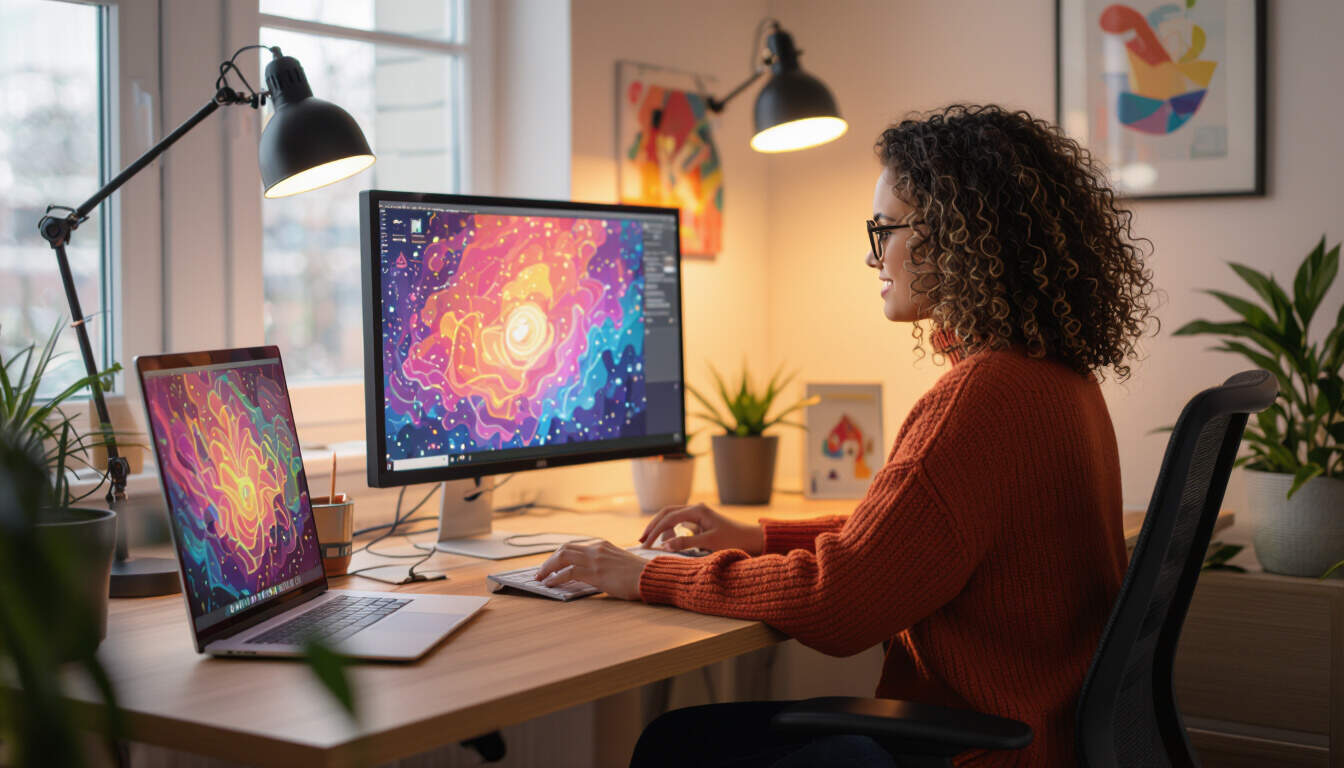Graphic Design Software for Effective Remote Work
 by Marlene Keeling
by Marlene Keeling
Explore how graphic design software boosts productivity and collaboration for remote workers and freelancers. Learn about key tools that help maintain balance while working from anywhere, making remote setups more efficient.

Remote work has become a staple for many professionals, including graphic designers who rely on specific tools to complete their projects. These tools play a crucial role in daily workflows.
For remote workers, selecting the right graphic design software can transform how tasks are handled. Graphic design software offers features that allow for seamless creation and editing of visuals from any location. This accessibility is essential for freelancers managing multiple clients across different time zones.
One popular option is Adobe Creative Cloud, which includes programs like Photoshop and Illustrator. These applications provide a wide array of functions that support detailed work on images and vectors. For instance, remote teams can use shared libraries to collaborate on projects in real-time. This capability helps maintain consistency across designs without the need for physical meetings.
Productivity is key in remote environments, and remote work setups benefit from software that streamlines processes. Tools like Canva offer user-friendly interfaces that enable quick design creation, even for those new to the field. Its drag-and-drop features reduce the time spent on basic tasks, allowing more focus on creative aspects. Many users report completing projects faster, which contributes to better overall efficiency.
Beyond individual use, virtual team collaboration is vital for businesses with distributed teams. Software such as Figma allows multiple users to work on the same file simultaneously. This interactive approach fosters teamwork and reduces miscommunications that can occur in remote settings. For managers overseeing design projects, these tools provide a way to track progress and provide feedback instantly.
Maintaining work-life balance is another area where graphic design software makes a difference. By automating repetitive tasks, these programs free up time for personal activities. For example, using templates in software like Affinity Designer can speed up workflow, helping users avoid long hours at their desks. This balance is particularly important for freelancers who often work irregular schedules.
When considering options, it's helpful to think about integration with other tools. Many graphic design software programs connect with cloud storage solutions, making file sharing straightforward. This integration ensures that remote workers can access their work from various devices, enhancing flexibility.
For those new to remote work, starting with free or trial versions of software can be a good strategy. Options like GIMP provide powerful editing capabilities without cost, serving as an entry point for beginners. As users gain experience, they can upgrade to more advanced versions that offer additional features.
In practice, remote designers often combine multiple tools to cover all needs. For instance, pairing design software with project management apps helps organize tasks and deadlines. This combination leads to a more structured workday, reducing stress and improving output quality.
The benefits extend to businesses transitioning to remote setups. By adopting productivity tools, companies can ensure their design teams remain effective regardless of location. Training sessions on these tools can help employees adapt quickly, leading to smoother operations.
Real-world examples show how these tools have impacted professionals. A freelance designer might use Sketch for interface design, appreciating its precision and ease of use. This tool's vector-based editing supports high-quality results, which is crucial for client satisfaction.
Over time, as remote work continues to grow, the evolution of graphic design software will likely include more AI-driven features. These advancements could further assist in automating complex processes, allowing creators to focus on innovation.
To get started, evaluate your specific requirements based on project types and team size. Testing different software options will help identify the best fit for your remote setup. Remember, the goal is to enhance both professional output and personal well-being.
In summary, integrating the right graphic design software into remote work routines can lead to significant improvements. It supports efficient collaboration, boosts productivity, and aids in achieving a healthy balance. For remote workers, freelancers, and managers, these tools are indispensable for success in modern work environments.
Key Features to Look For
- Intuitive interfaces for quick learning
- Real-time collaboration options
- Cloud-based storage for accessibility
- Customizable templates to save time
- Export options for various formats
Tips for Implementation
- Schedule regular breaks to avoid fatigue
- Use version control to track changes
- Encourage team feedback sessions
- Set clear goals for each project
- Regularly update software for optimal performance
